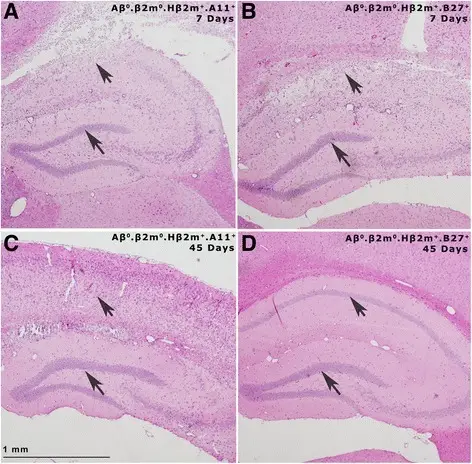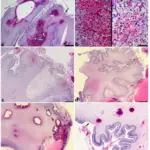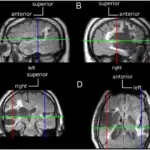Chronic neuronal injury refers to a series of biochemical pathways that leads to necrosis and apoptosis over a long period of time. This involves memory loss, motor dysfunction, and neurogenic inflammation. Chronic neuronal injury is mostly irreversible.
What is Chronic Neuronal Injury?

Pathology of the hippocampus. Paraffin sections stained with hematoxylin and eosin showing the hippocampus following virus infection. Arrowheads point to the dentate gyrus of the hippocampus that is preserved in all strains. Arrows point to the pyramidal cells of the hippocampus, which is destroyed in both B27+ and A11+ strains at day 7 DPI but is repaired in B27+ mice by 45 dpi but not repaired in A11+ strains. a Aβ0.β2m0.Hβ2m+.A11+ mouse at 7 dpi. b Aβ0.β2m0.Hβ2m+.B27+ mouse at 7 dpi. c Aβ0.β2m0.Hβ2m+.A11+ mouse at 45 dpi. d Aβ0.β2m0.Hβ2m+.B27+ mouse at 45 dpi. Note extensive shrinkage of the brain parenchyma in the Aβ0.β2m0.Hβ2m+.A11+ mouse at 45 dpi compared to the Aβ0.β2m0.Hβ2m+.B27+ mouse. Scale bar = 1 mm. Human class I major histocompatibility complex alleles determine central nervous system injury versus repair
Journal of Neuroinflammation. Not Altered. CC.


